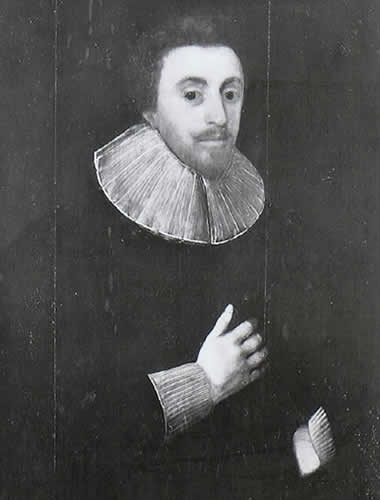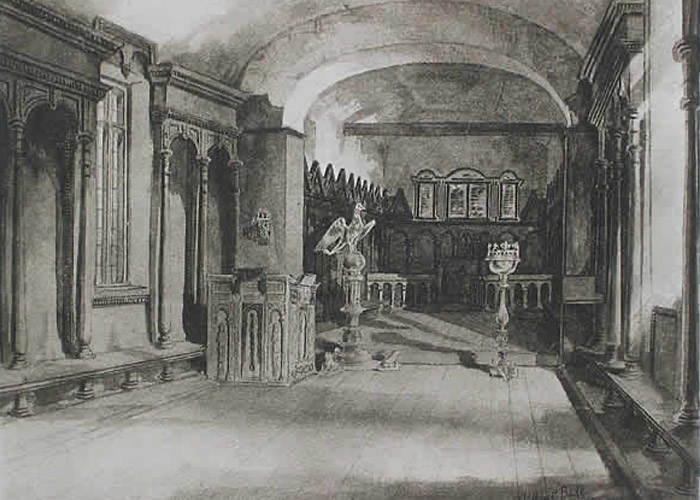Neolithic or Bronze age. No evidence of settlements, but some nearby.
Roman pottery found between Steeple and Little Gidding
500-700 AD Anglo-Saxons at Great Gidding, an early settlement under a leader named Gydel: the name Gidding derives from ‘Gydel’s people’.
After 650 Probably pagan at first, Christian missionaries moving down from Peterborough.
800-900 Viking invasions, Norman Cross named for settlement of Norsemen. Huntingdonshire became part of Danelaw, settled by free peasant farmers.
William the Conqueror’s inventory, the Domesday Book of 1086, reports that Great Gidding supported at least 6 ‘sokemen’ – half of the village in the soke of Accumesbury, the other in the soke of the hundred of Cresseuuelle. No mention of separate village of Little Gidding. Total population 343-490. Norman barons Engaine became landlords, displacing the Danes.
Little Gidding – Gidding Parva – formed as separate manor for a younger son soon after Domesday.
1185 Fund raising for the Crusades – Maud Engaine granted Little Gidding church to the Order of Knights Templars at Temple Bruer in Lincs., but the Inquiry of the Knights Templars in 1186 reveals that the church returned ‘no geld’.(The gift would have been of the revenue due to the church in tithes.)
Engaines continued in possession of their manors Little Gidding and Great Gidding until 16th century
1279 Little Gidding had 600 acres under cultivation, and 31 households living either side of the street which ran from the present main road to a point in the wood behind the church
1312 Order of the Knights Templars dissolved in England, and their property passed to the Knights Hospitallers “hence the present dedication of the church to St John” according to a Victorian writer; but the St John of Jerusalem was John the Baptist, and Little Gidding is dedicated to John the Divine, or Evangelist. Is this a mistake, or a change of preferences?
1348 the great plague – Little Gidding village deserted
16th century – 19th century
1554 Knights Hospitallers dissolved along with the Monasteries, patronage went to the Crown.
1566 there were 6 households. The plague was not the only cause of Little Gidding decline: it seems that landlords turned to livestock rather than arable farming, as the workforce declined. Enclosure followed, and possibly eviction of the remaining residents.
1594 there were no houses left in the village.
1625 Ferrars bought the Manor of Little Gidding, found the church and house in ruins and started rebuilding. The family comprised old Mary Ferrar, her sons Nicholas and John, daughter Susanna; John’s wife Bathsheba and their 2 children, Susanna’s husband John Collett and their 16 children; along with friends and elderly people in an almshouse.
1626 Nicholas Ferrar ordained Deacon by Archbishop Laud in Westminster Abbey.
1637 Nicholas Ferrar died. ‘It is the right, good old way you are in: keep in it.’
1642 King Charles I spent the day with the community, in March, en route for the north.
1643 During a period of local unrest in the Civil Wars, John Ferrar and some of his family went to Holland, but had returned by 1646. There have been successive allegations of ransacking of the church and the estate during this period. Latest research shows that this did not happen.
1646 King Charles visited 2nd May on the run after the battle of Naseby. He was led across the fields to Coppingford Lodge during the night by John Ferrar.
strong>1657 John Ferrar and Susanna Collett died; the end of community, although the family remained.
1714 John Ferrar and his son the Reverend Thomas renovated the church. Installed wooden panelling. Church reduced in length about 2 feet, new façade built.
1790 Dr Peter Peckard published his ‘Life of Nicholas Ferrar’. Dr Peckard had inherited the Ferrar papers from his father in law, Edward Ferrar II, the last male heir of the Little Gidding Ferrars. This contains the first published reference to the alleged ransacking of the church in 1646, which is now discounted.
19th century – present day
1848 William Hopkinson bought the property, built new house (now Ferrar House), the old Manor House having disappeared. He began to restore the church, starting with a bell to call people to worship.
1853 William Hopkinson completed the restoration of the church, having put in new stained glass windows and a chandelier.
1880 ‘John Inglesant’ by JH Shorthouse published. In it, the hero is described visiting the Ferrars at Little Gidding in the year of Nicholas’ death, and on later occasions. An intimate picture is drawn of daily life in the family, of personalities, appearances and habits, as well as the daily routine of worship. It was extremely popular.
1913 Oratory of the Good Shepherd established at a meeting at Little Gidding
1920s another renovation, wall sconces added; the gift of Lady Margaret Proby of Elton Hall.
1936 TS Eliot visited May 25th
1938 Alan Maycock‘s biography of Nicholas Ferrar published
1942 TS Eliot’s Fourth Quartet ‘Little Gidding’ published
1946 Alan and Edith Maycock visited Little Gidding, found the church in poor condition, and with others, formed the Friends of Little Gidding in July.
Friends organised and paid for many renovations and repairs to the church over the next decades, and organised an annual pilgrimage led by the Bishop of Ely.
1964 The Nicholas Ferrar Memorial Church, the Church of the Good Shepherd, consecrated at Arbury in Cambridge.
1970 Tony and Judith Hodgson bought the Manor Farm at Little Gidding, formed a new community.
1980s Brick flowerbeds replaced the old fence separating the church from the Manor Farm property. Carpark improved. Community of Christ the Sower flourished.
1990 West window replaced – stained glass crucifixion sold to Peterborough High School; ‘venetian’ window installed, designed by the Diocesan architect, Julian Limintani
1998 Community disbanded. Ferrar House in the charge of wardens-caretakers appointed by The Little Gidding Trust. The church in the care of the Parochial Church Council (Giddings PCC)
2004 Society of the Friends of Little Gidding re-founded
2005 Tony and Judith Hodgson returned to Little Gidding as Wardens of Ferrar House, appointed by the Little Gidding Trust. The church continues in the care of the Giddings PCC. Resumed summer-time pilgrimage, led by Bishop Simon Barrington-Ward. This is to be an annual event, organised by Ferrar House and the PCC.





